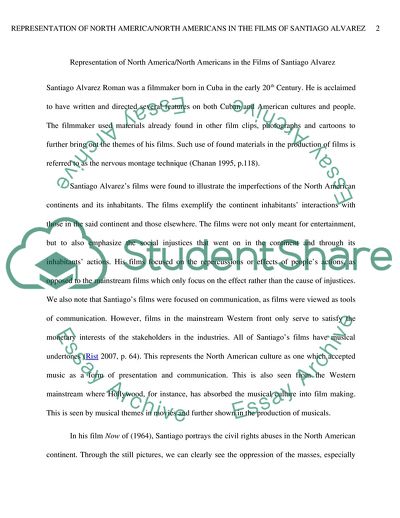Cite this document
(Representation of North America in the Films of Santiago Alvarez Essay, n.d.)
Representation of North America in the Films of Santiago Alvarez Essay. https://studentshare.org/visual-arts-film-studies/1760631-discuss-the-representation-of-north-americanorth-americans-in-the-films-of-santiago-alvarez-and-compare-them-to-mainstream-western-media-representations-in-hollywood-andor-news-media
Representation of North America in the Films of Santiago Alvarez Essay. https://studentshare.org/visual-arts-film-studies/1760631-discuss-the-representation-of-north-americanorth-americans-in-the-films-of-santiago-alvarez-and-compare-them-to-mainstream-western-media-representations-in-hollywood-andor-news-media
(Representation of North America in the Films of Santiago Alvarez Essay)
Representation of North America in the Films of Santiago Alvarez Essay. https://studentshare.org/visual-arts-film-studies/1760631-discuss-the-representation-of-north-americanorth-americans-in-the-films-of-santiago-alvarez-and-compare-them-to-mainstream-western-media-representations-in-hollywood-andor-news-media.
Representation of North America in the Films of Santiago Alvarez Essay. https://studentshare.org/visual-arts-film-studies/1760631-discuss-the-representation-of-north-americanorth-americans-in-the-films-of-santiago-alvarez-and-compare-them-to-mainstream-western-media-representations-in-hollywood-andor-news-media.
“Representation of North America in the Films of Santiago Alvarez Essay”. https://studentshare.org/visual-arts-film-studies/1760631-discuss-the-representation-of-north-americanorth-americans-in-the-films-of-santiago-alvarez-and-compare-them-to-mainstream-western-media-representations-in-hollywood-andor-news-media.


